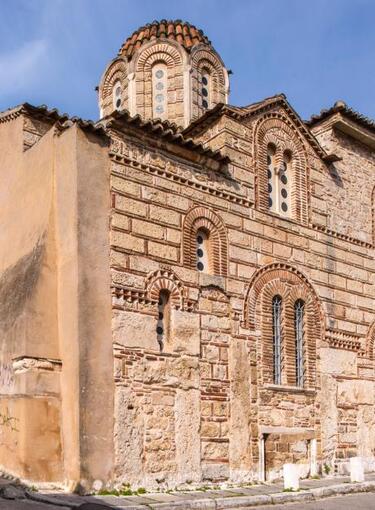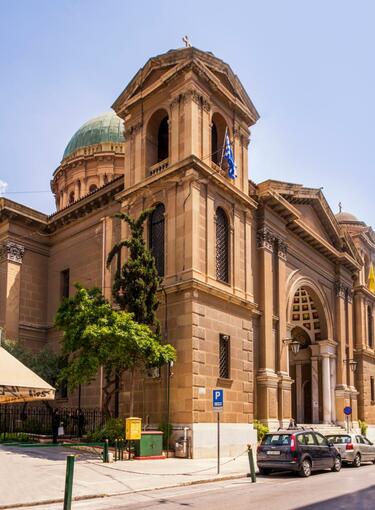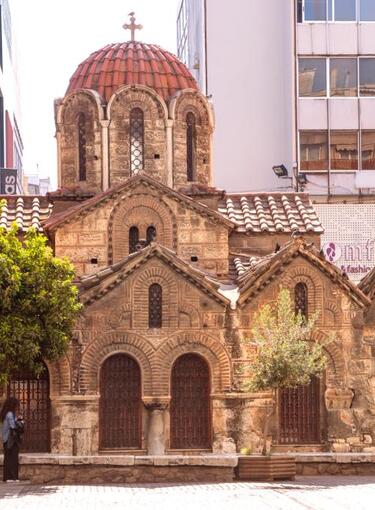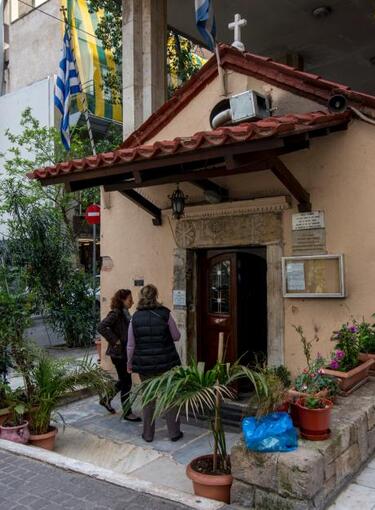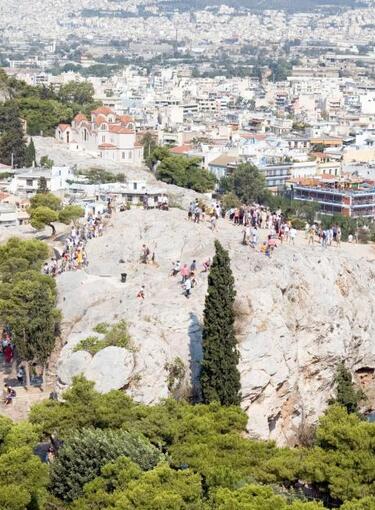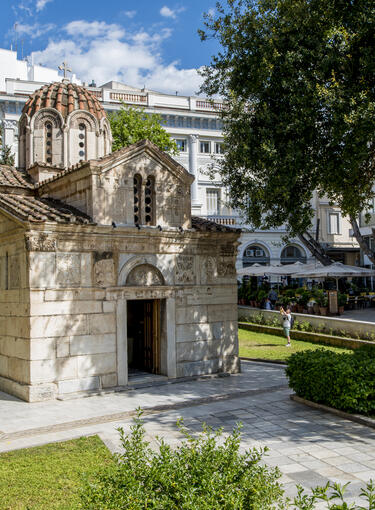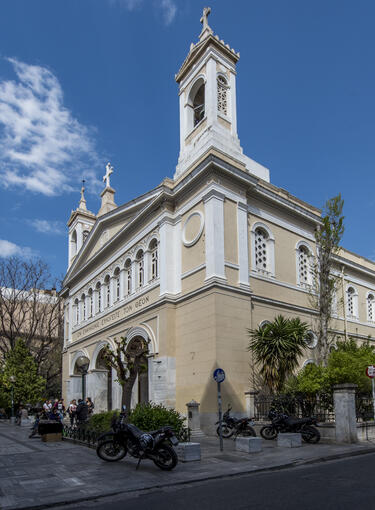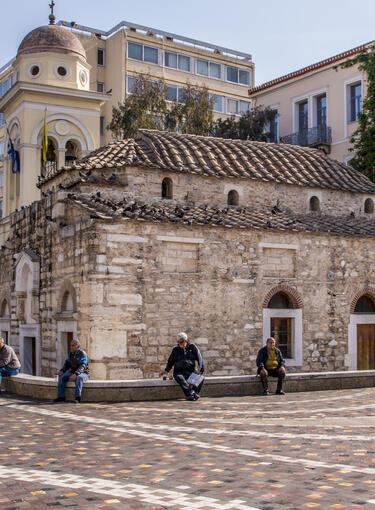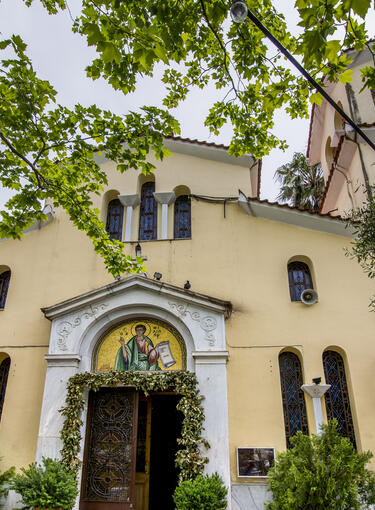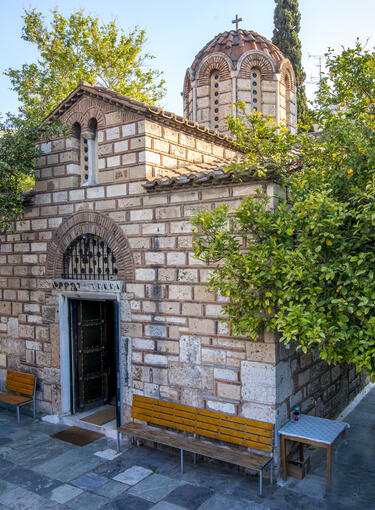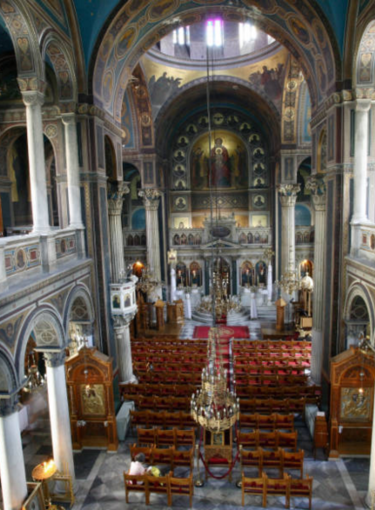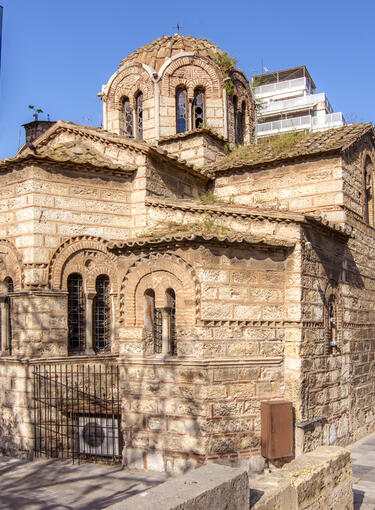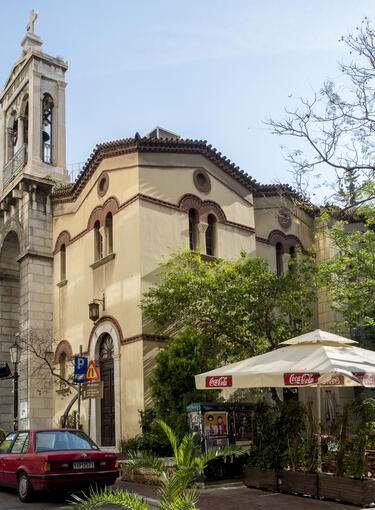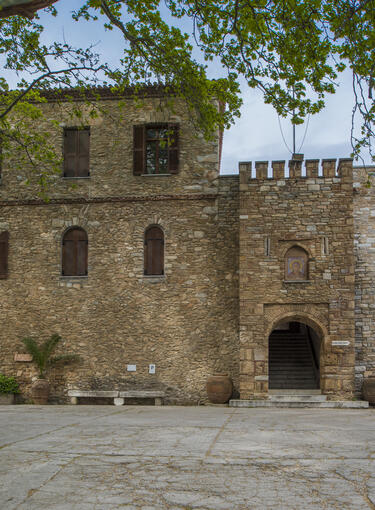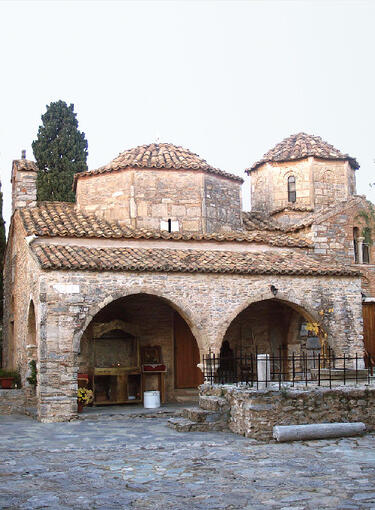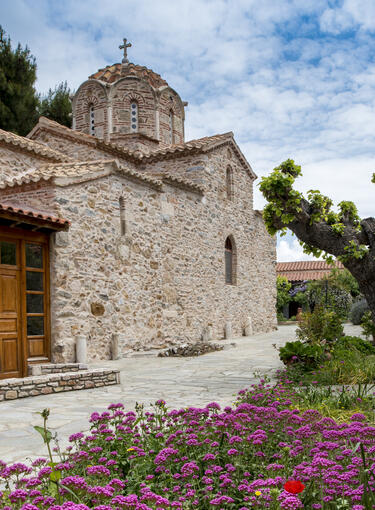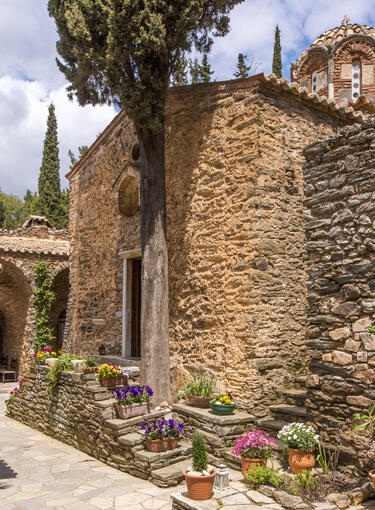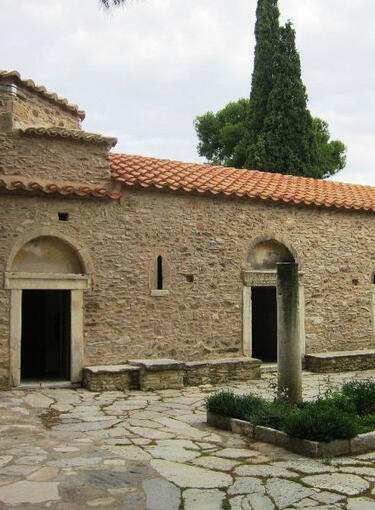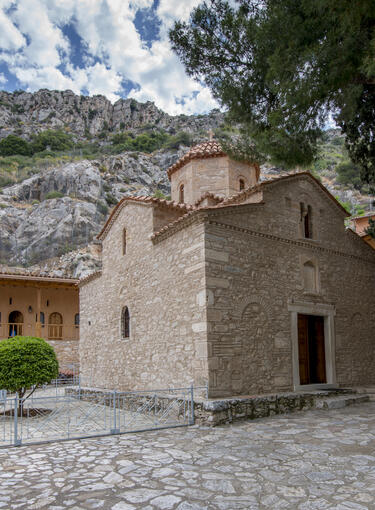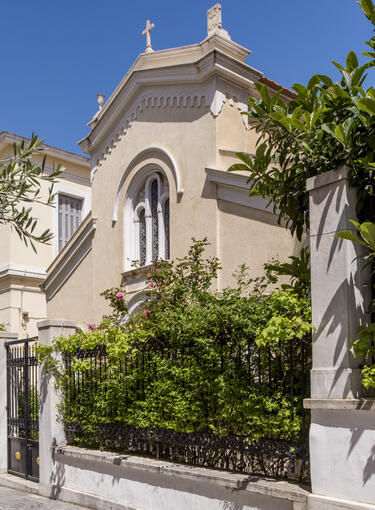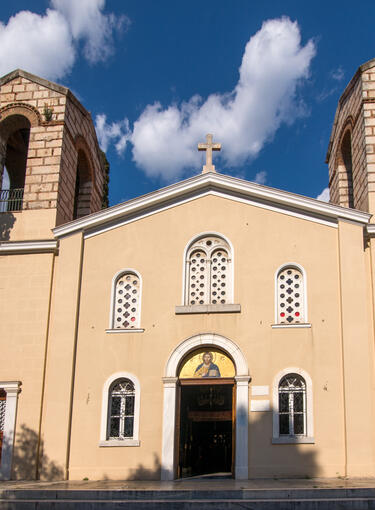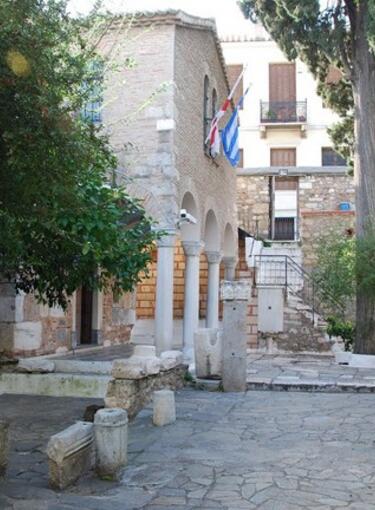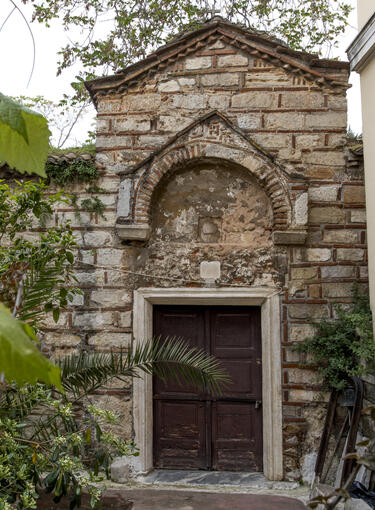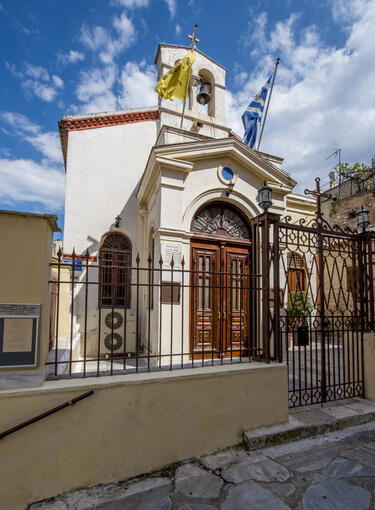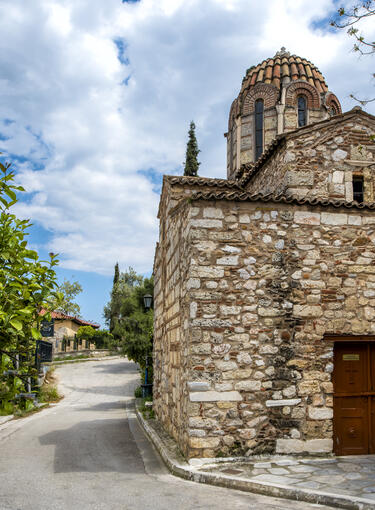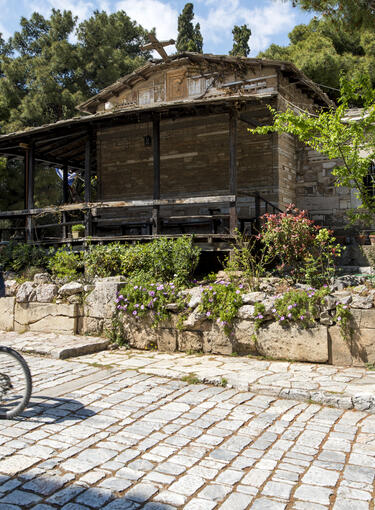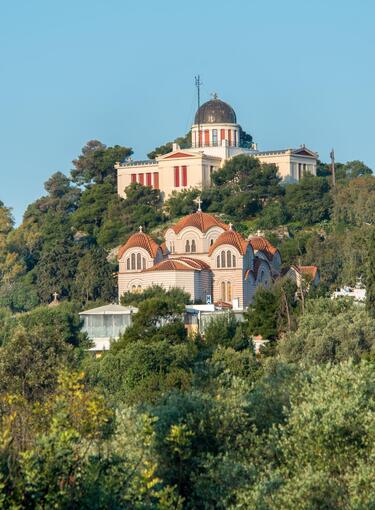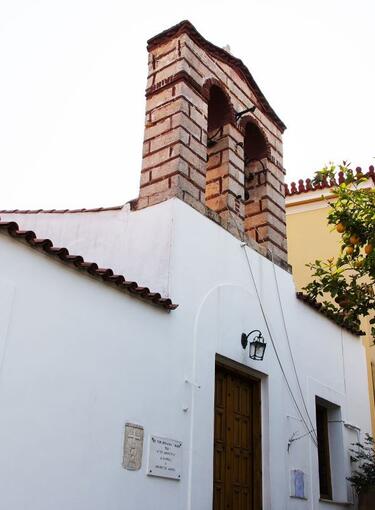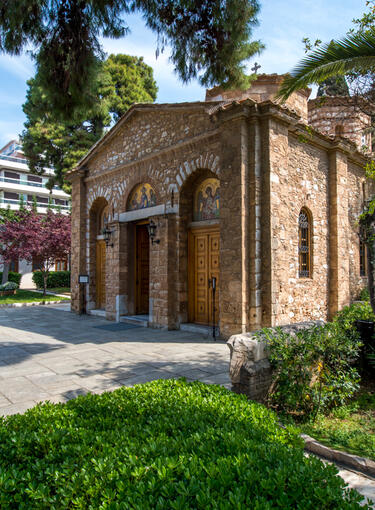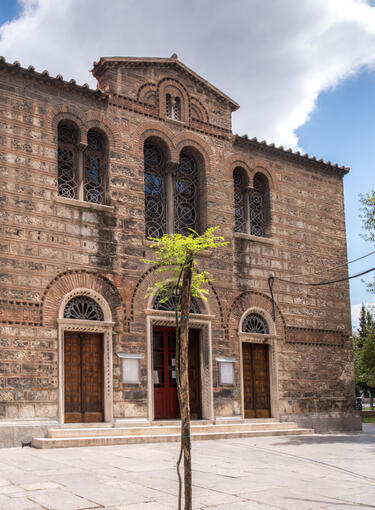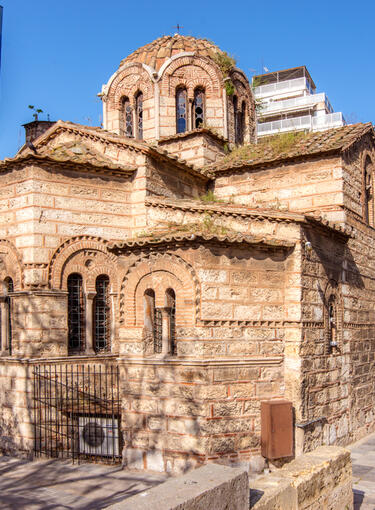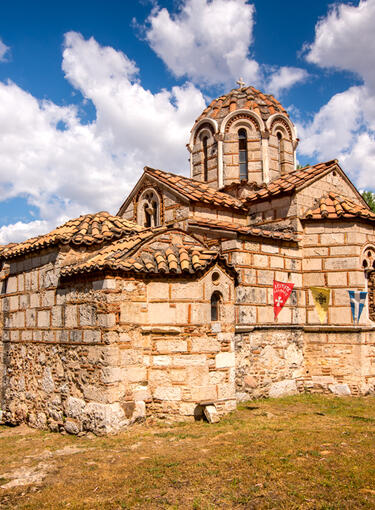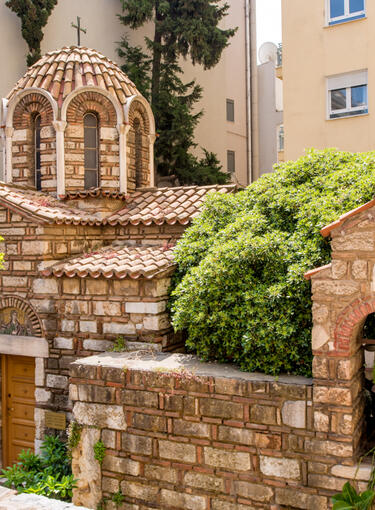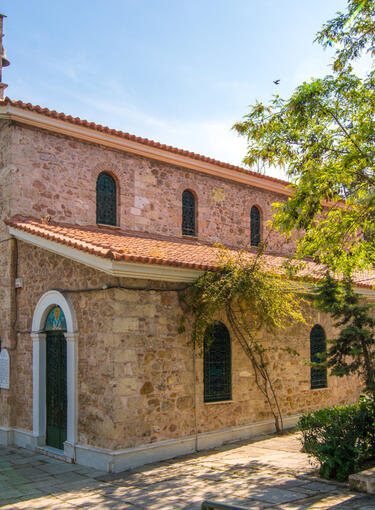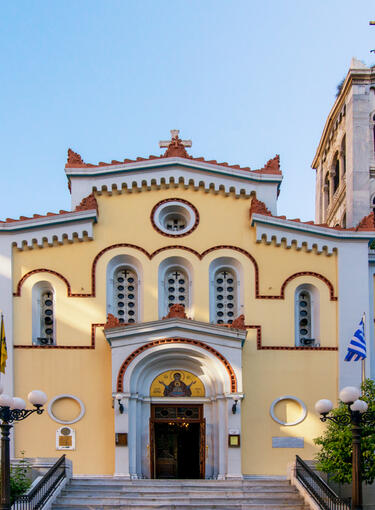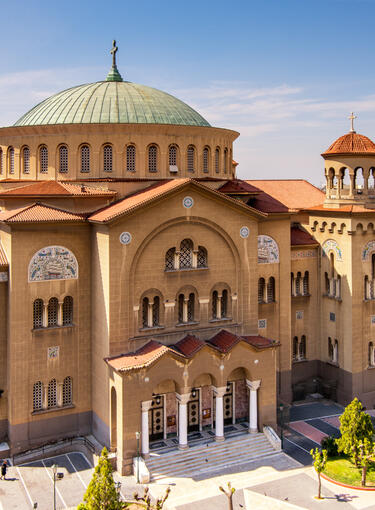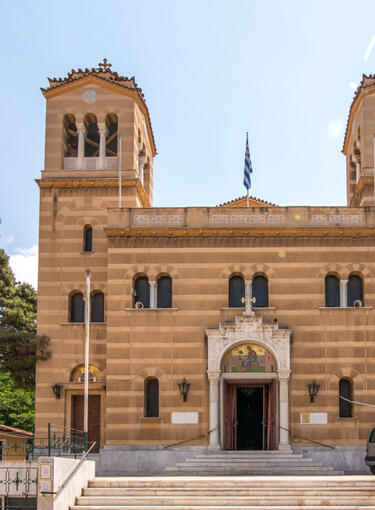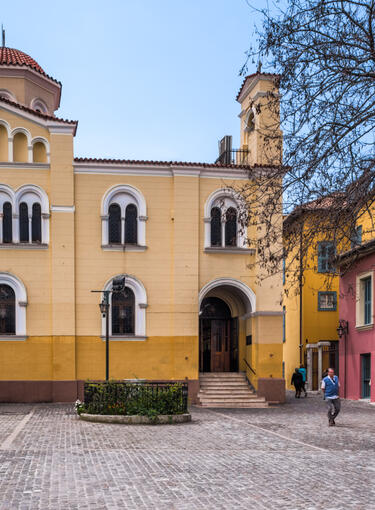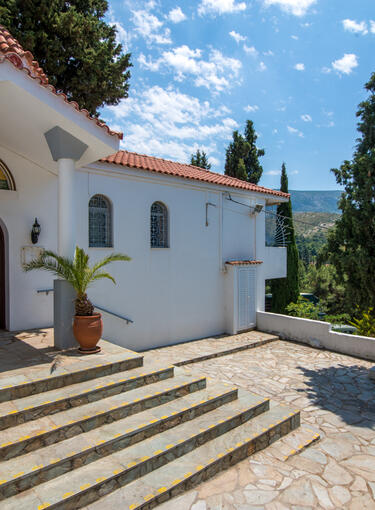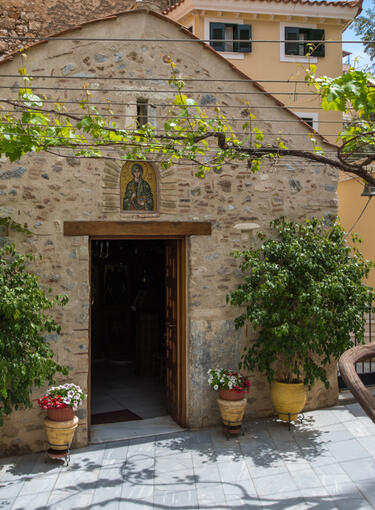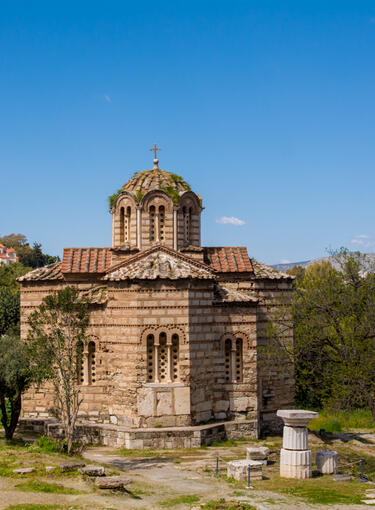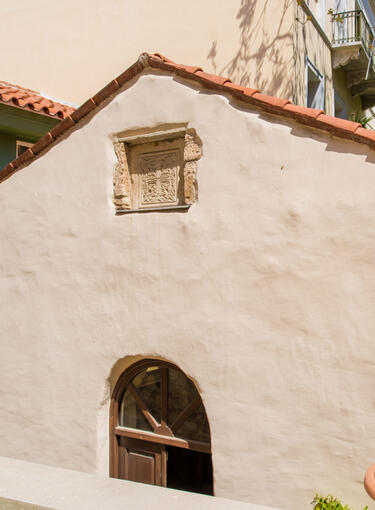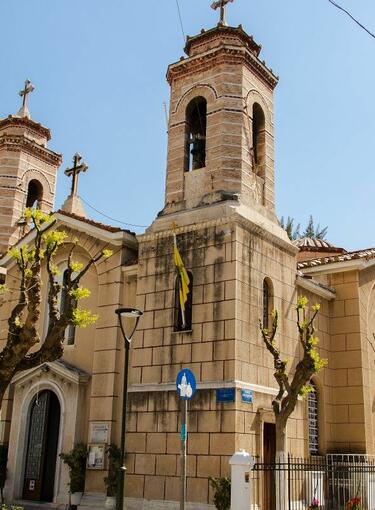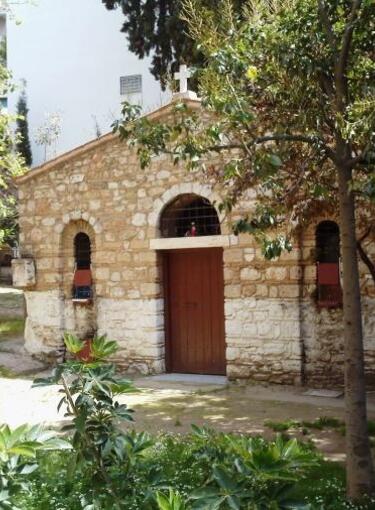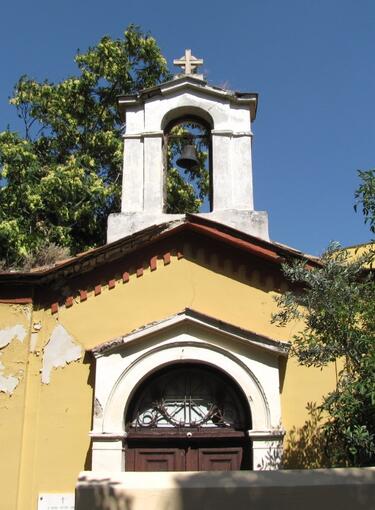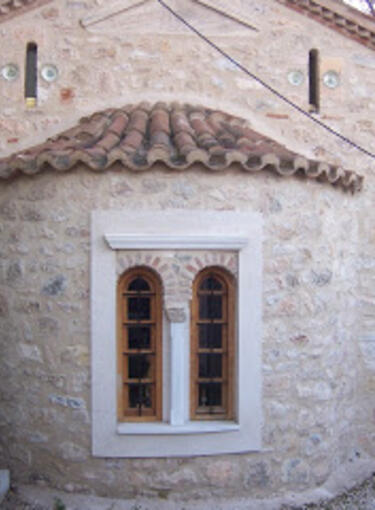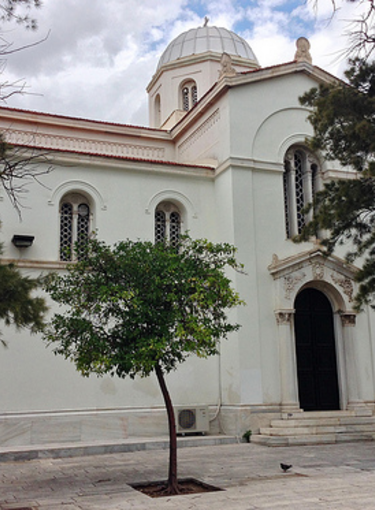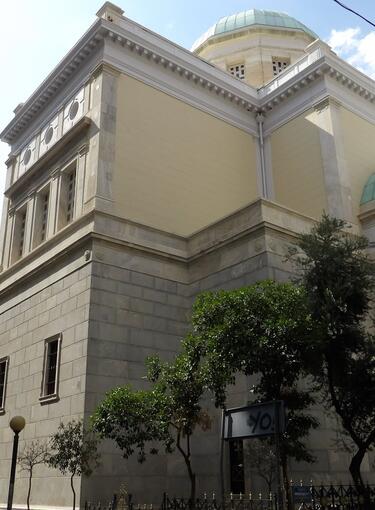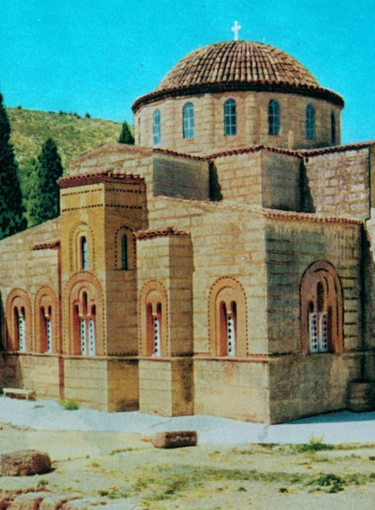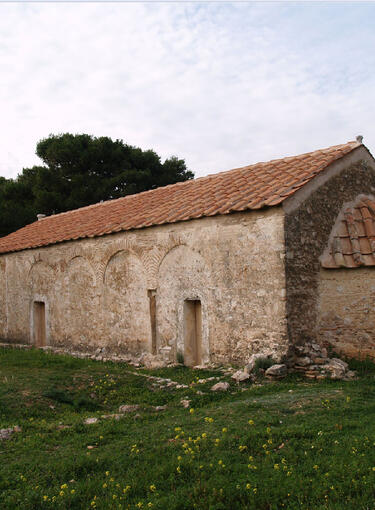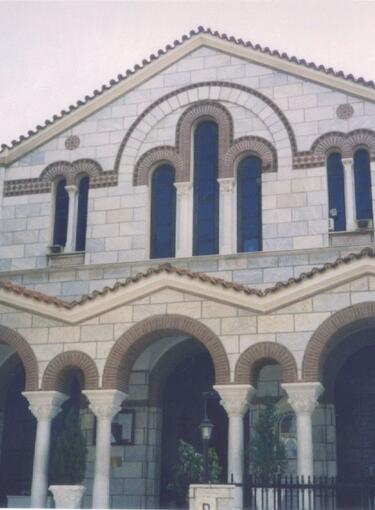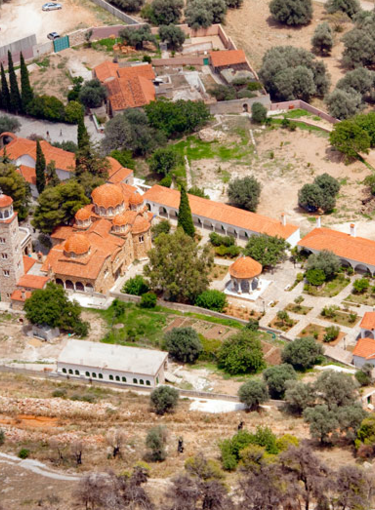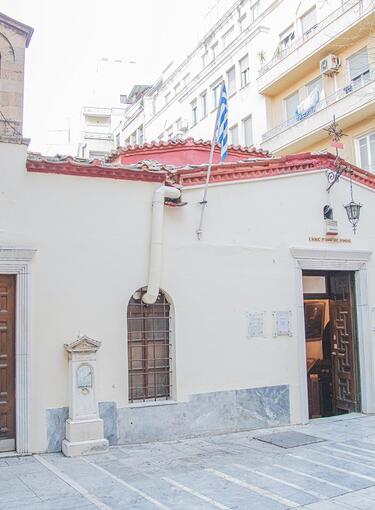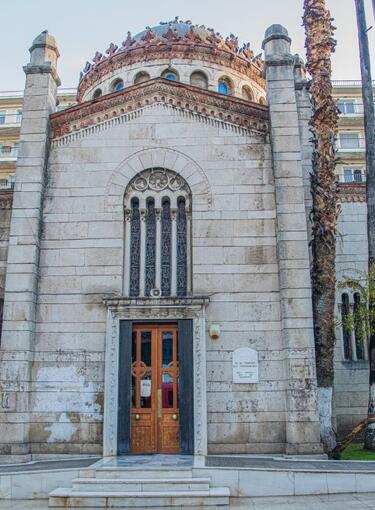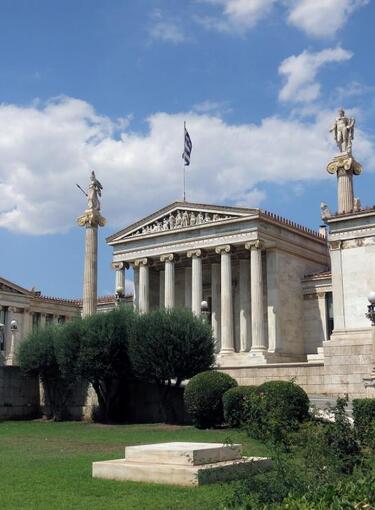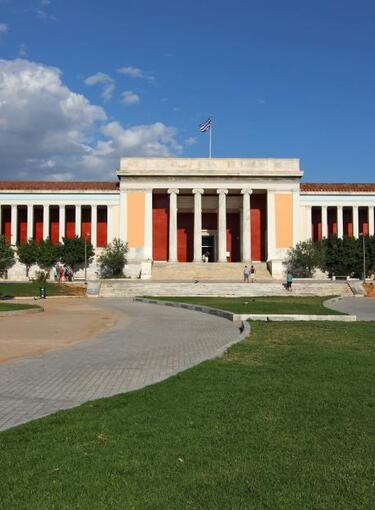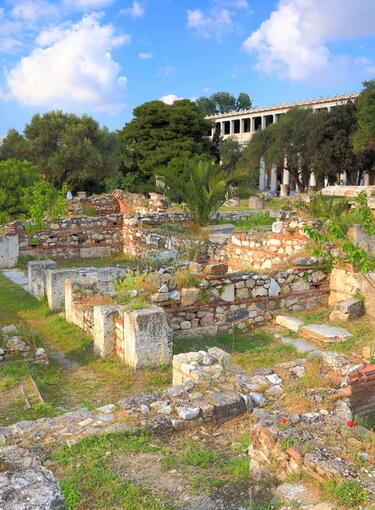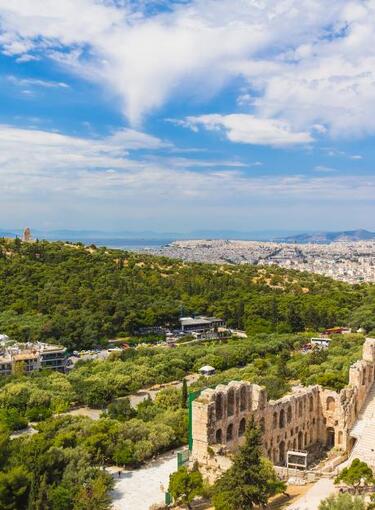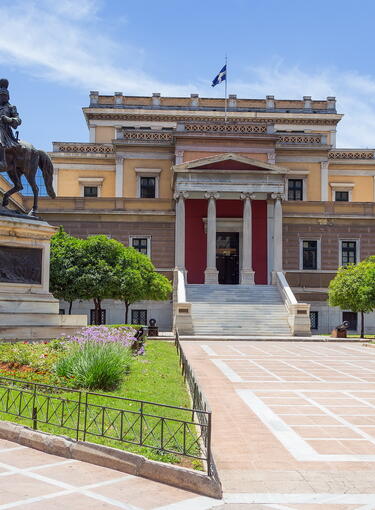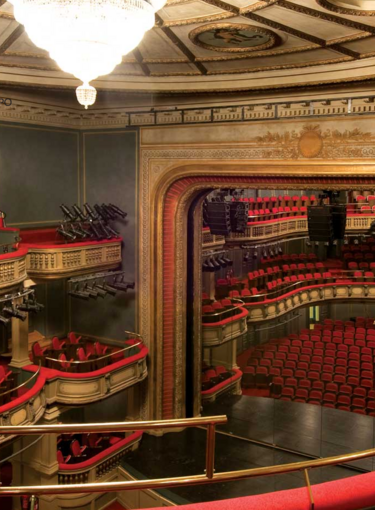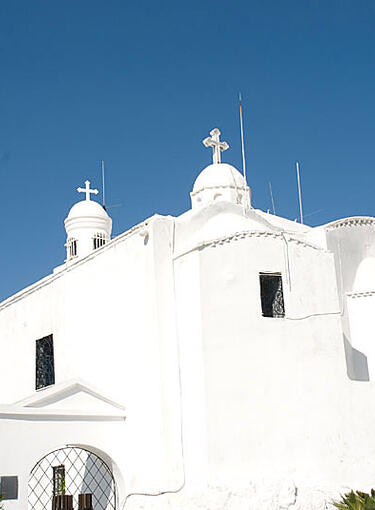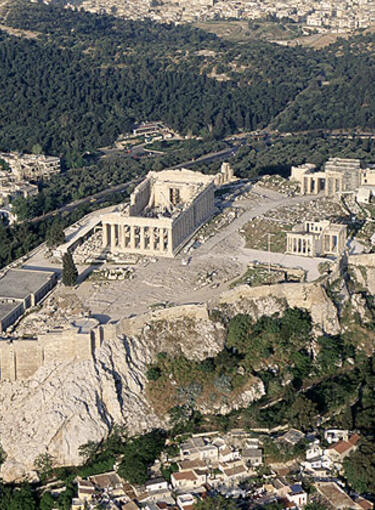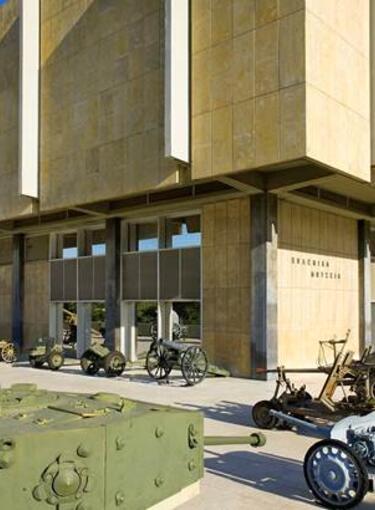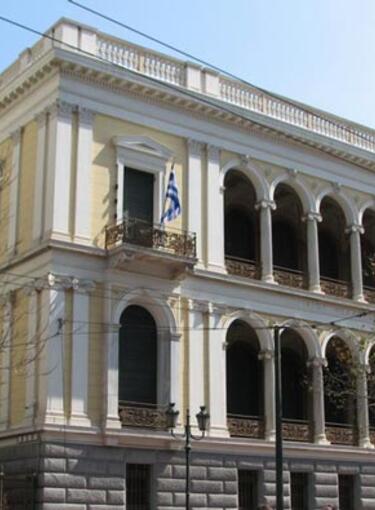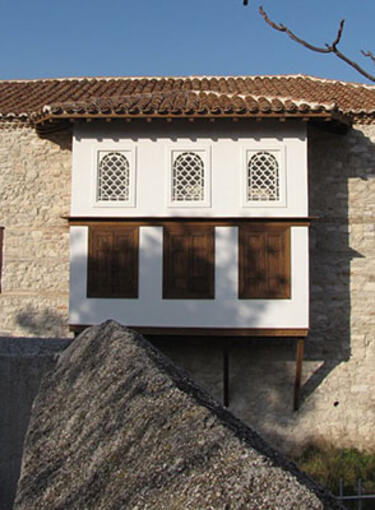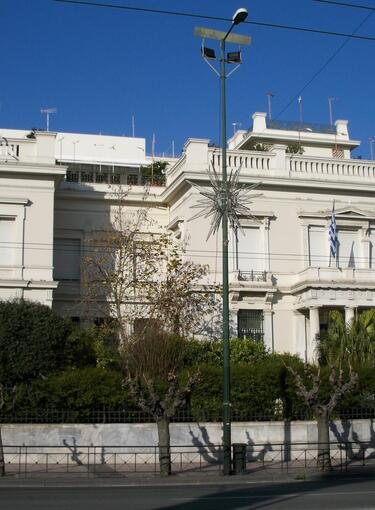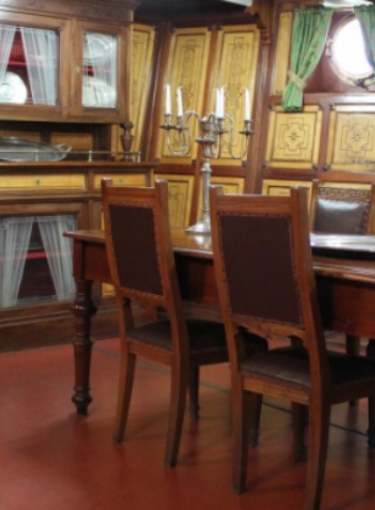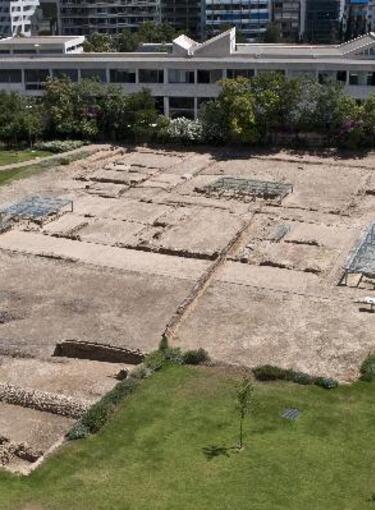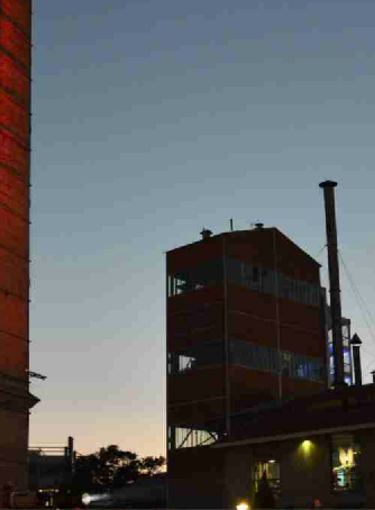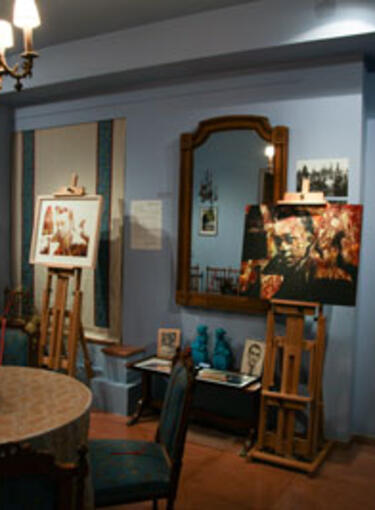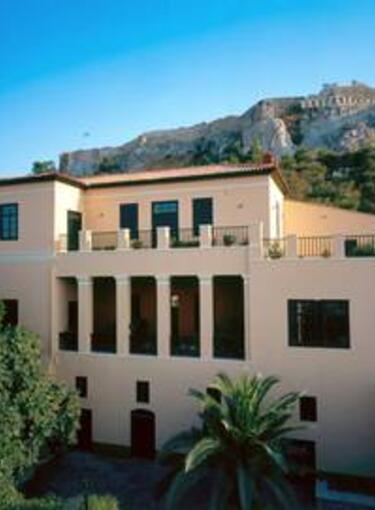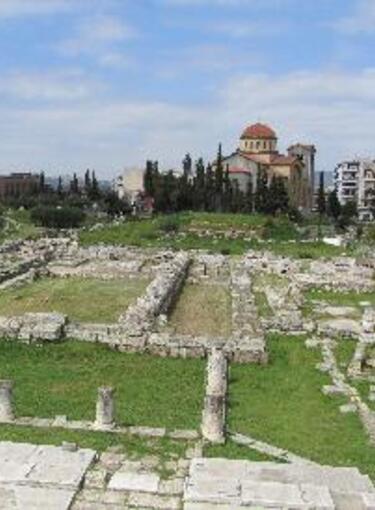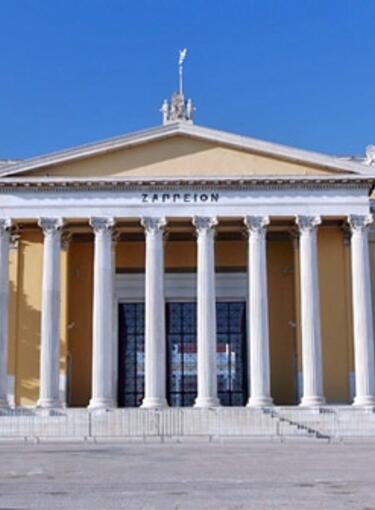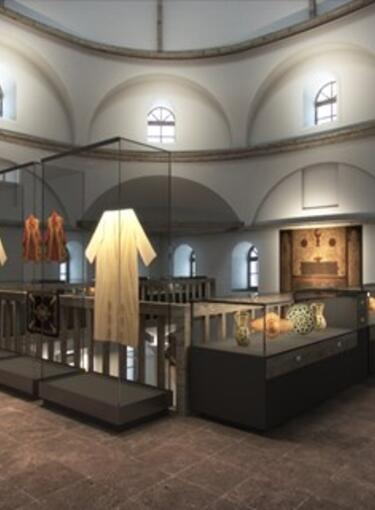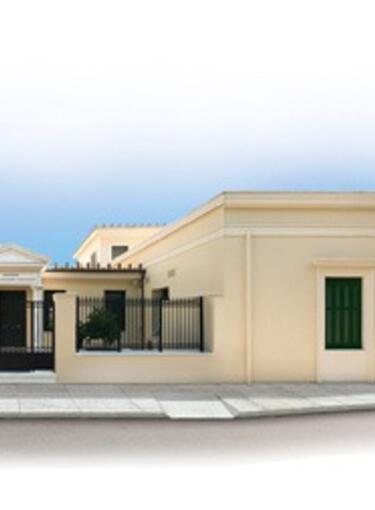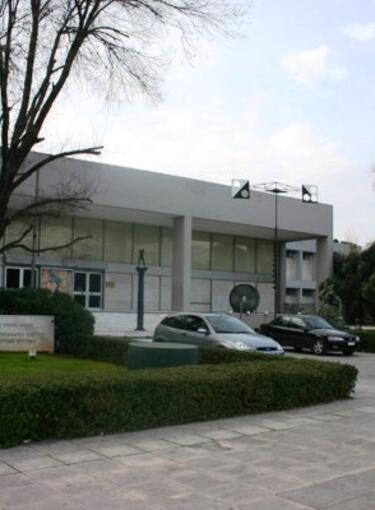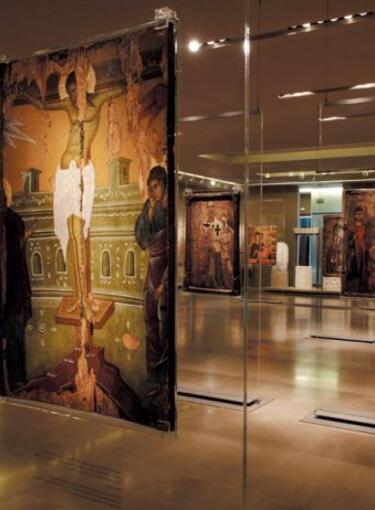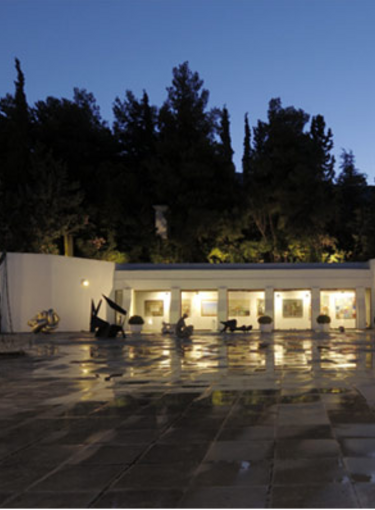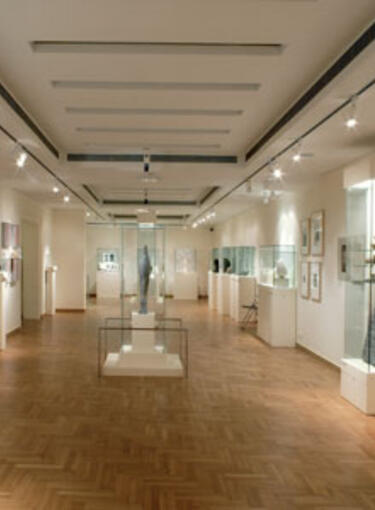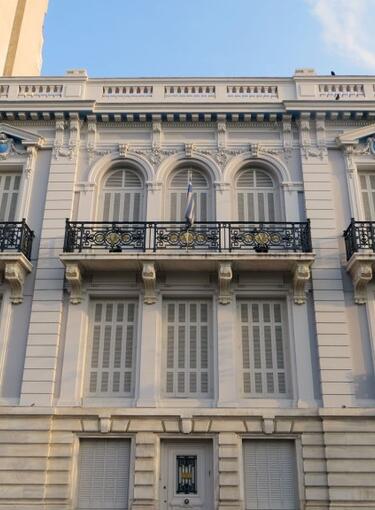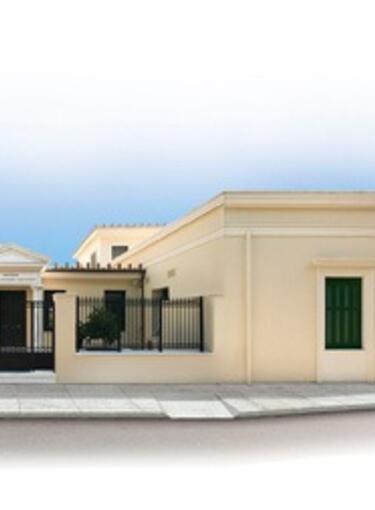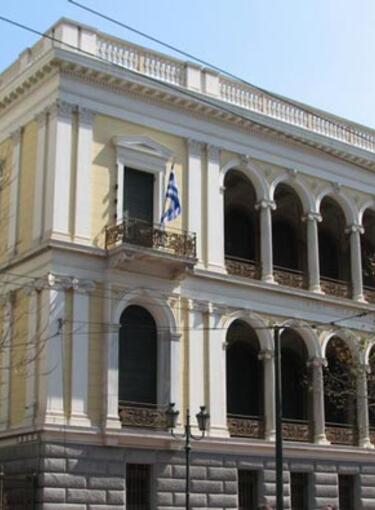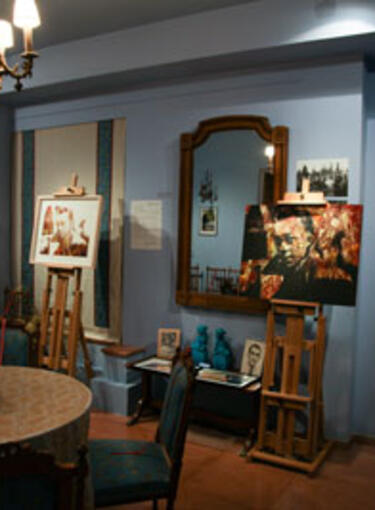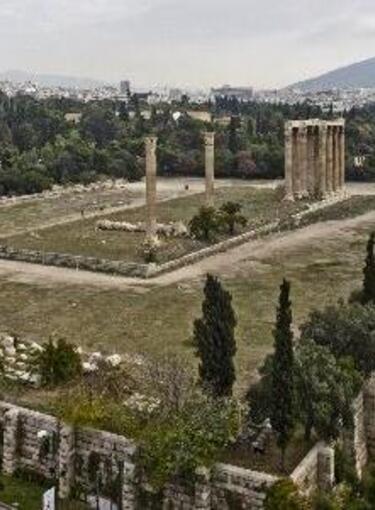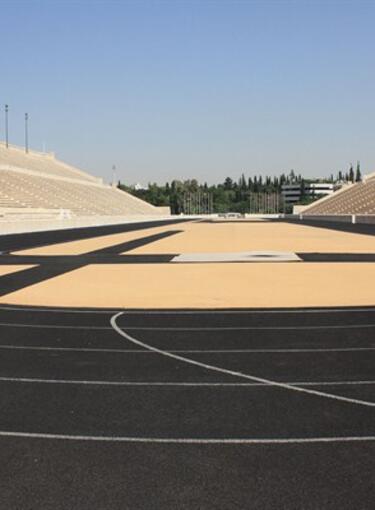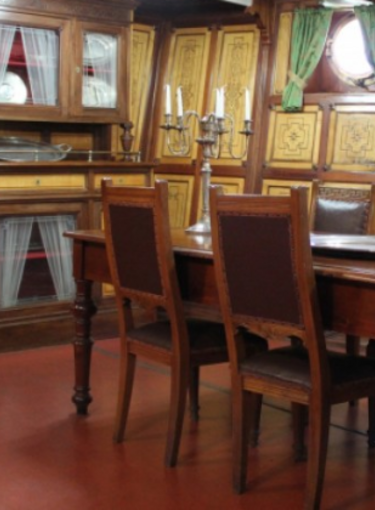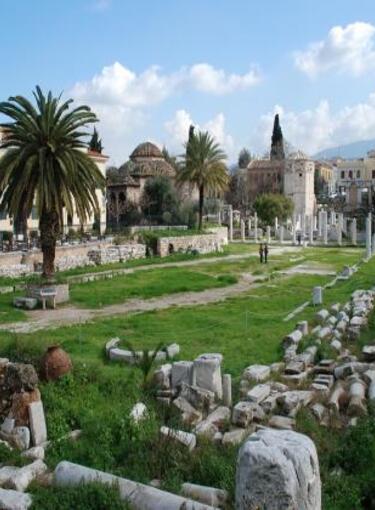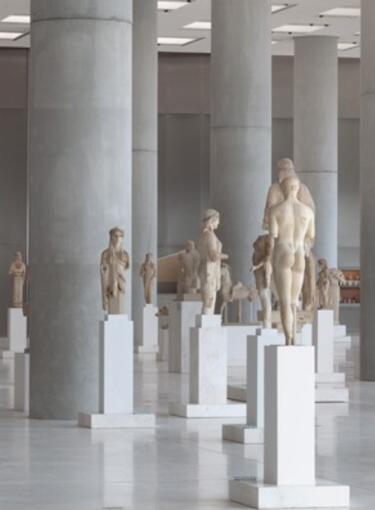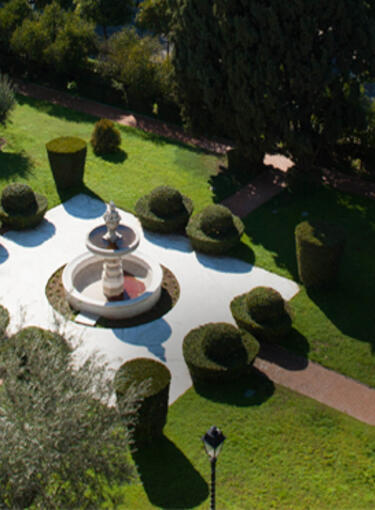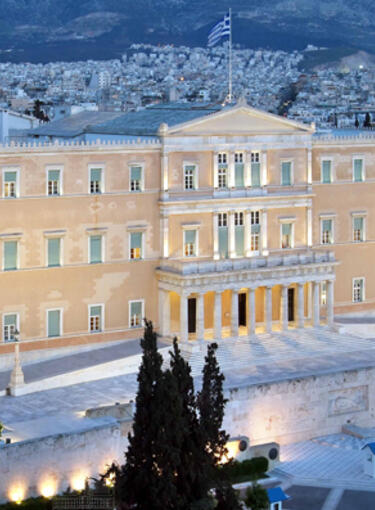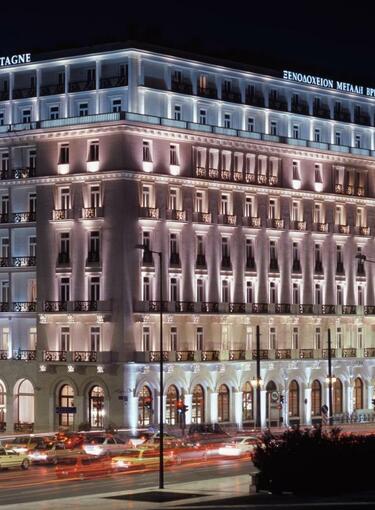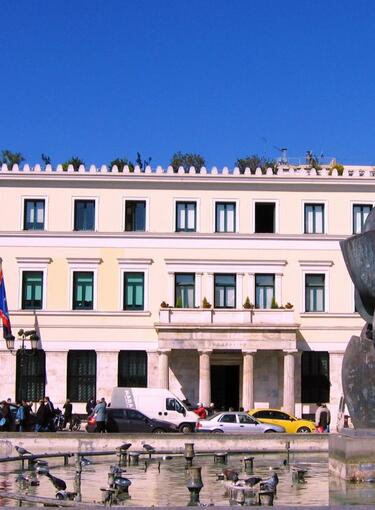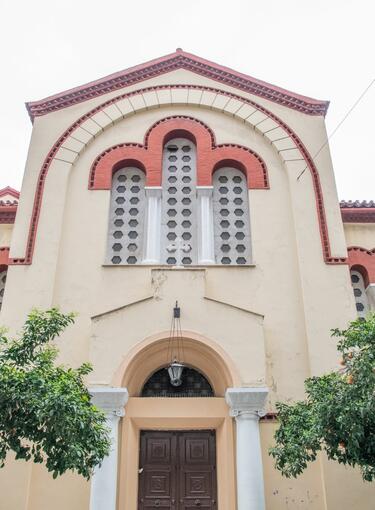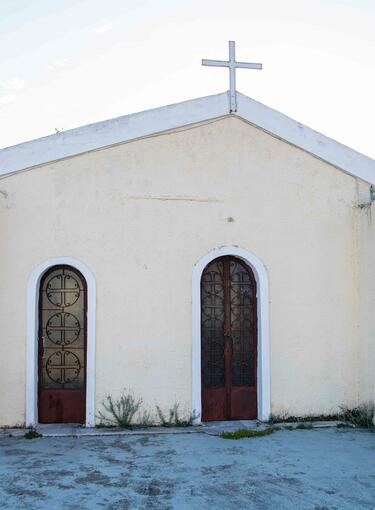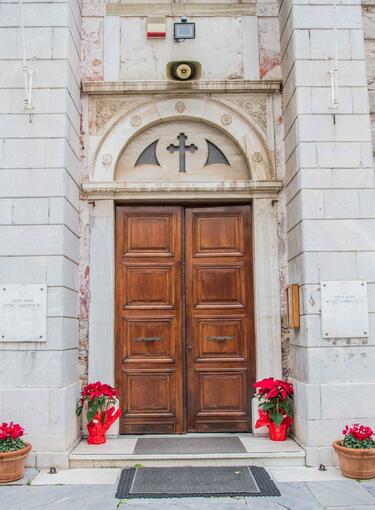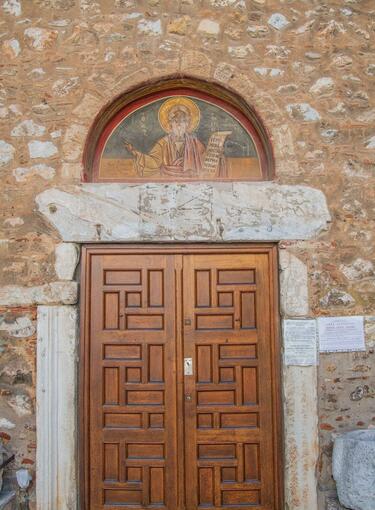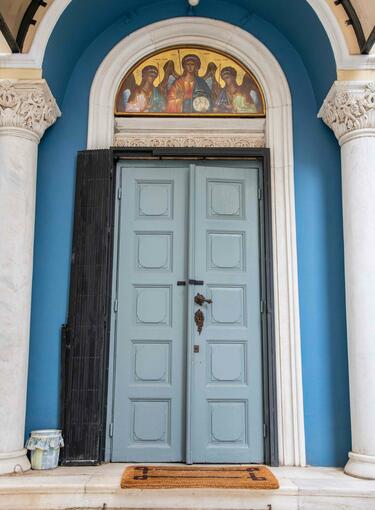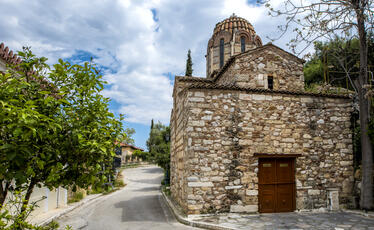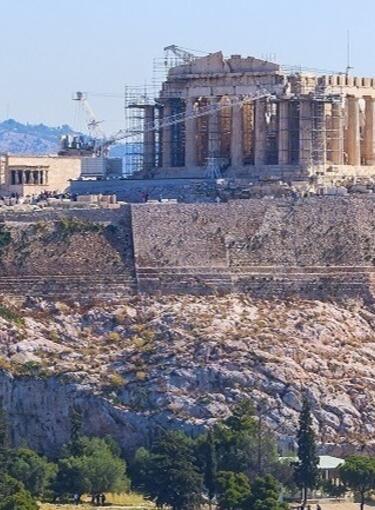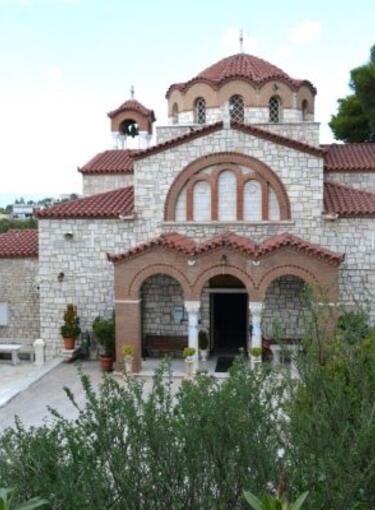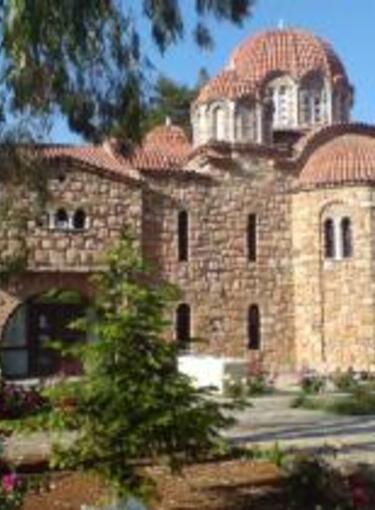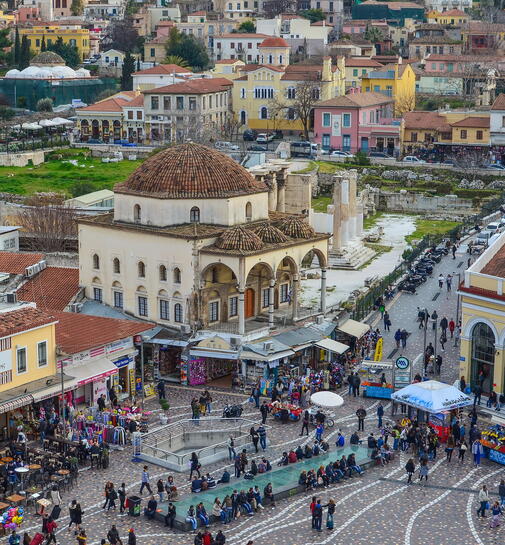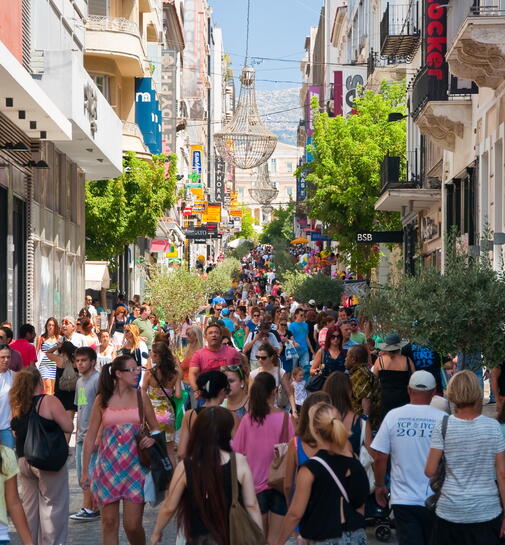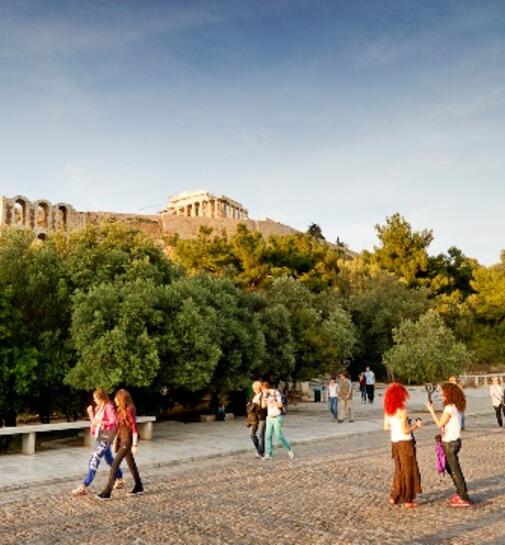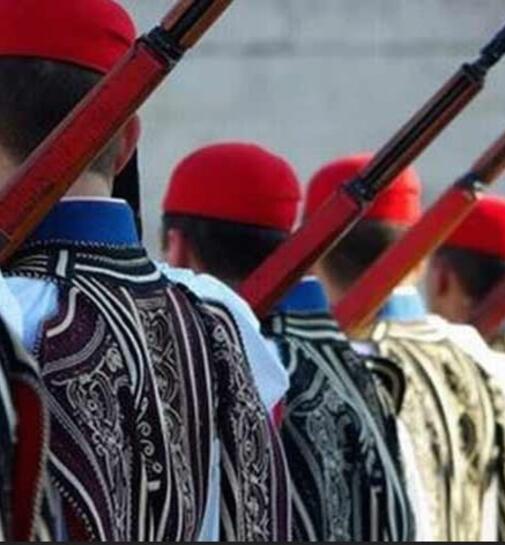The church of Agia Aikaterini is located at the intersection of Hairefontos and Lysikratous street at a busy and beautiful spot of the most picturesque district of Athens, Plaka, which attracts a lot of tourists. It has been constructed on top of an ancient temple dedicated to Artemis. On the one side of the courtyard there are the ruins of a Roman stoa with columns.
The church dates from the middle of the 11th century.
Initially it was dedicated to Agioi Theodoroi, as the silver icon that stands on the screen reminds us. In 1767 it became the Metochi of the Monastery of Agia Aikaterini in Sinai so that all priests who came from Sinai to Athens could stay here, and so it took its name from the Saint. It is believed that priests from Sinai were the ones who planted the palm trees around the church creating a unique oasis for the visitors.
The initial Byzantine church was a four-columned, cross-in-square church. On its eastern part there is a tripartite altar with semicircular arches while on the western part at the entrance is the tripartite narthex.
During the Greek Revolution there were some damages to the monument. After 1839 in order to satisfy the needs of the congregation they carried out alterations and additions on the northern, southern and western sides, while later they made some changes to the dome.
Among the icons the most remarkable are the ones of Ioannis Prodromos, Agia Aikaterini of the right marble shrine, the enthroned Virgin Mary on the left marble shrine, and Agios Spyridon.
The church keeps the holy relics brought by the refugees from Asia Minor.
Finally, at its courtyard the visitors can discern architectural members of ancient buildings that still survive.
Church of Saint Catherine, Plaka
Surrounded by trees, located in the most touristic district of Athens, in Plaka, emerges proud the Church of Saint Catherine, sheltering the history of ten plus centuries.
According to Travlos, the church of Saint Catherine, was built on ruins of an early Christian basilica and, in fact, he holds that the Roman-era columns which are preserved in the courtyard formed the atrium of the then church. Prior to the original early Christian church on the site pre-existed an ancient pagan sanctuary to the honour of Goddess Artemis.
The core of the present church, at the junction of Cherefondos, Lysicratous, Galanou and Goura Streets, was erected in the middle of the 11th century and originally it was dedicated to Saint Theodores. In the 18th century it was conceded, with the consent of the Metropolitan of Athens Bartholomew, to the Mount Sinai Monastery, and ever since it is honored in the name of Saint Catherine.
Despite that Saint Catherine’s church had been included among the monasteries which had to be dissolved, by virtue of a decree of 1834, until 1839 it was in the possession of the Sinai fathers and functioned as a dependency [metochion] of the Monastery of Saint Catherine of Sina. Yet, following a petition of the parishioners of the proximal area as also the consenting opinion of the Metropolitan of Athens and the Municipality, Saint Catherine was converted from a katholikon of the dependency to a parish church.
The condition of the church, either owing to the damage it had sustained during the course of the 1821 Revolution, or owing to the earthquake of 1837 had been nothing but sound and hence the execution of restoration works was judged as necessary. The works were completed with the economic contribution as well as the volunteer personal work of the parishioners themselves, among them also General Makrygiannis, who resided in proximity to the church and was a parishioner of Saint Catherine.
The original Byzantine church of the 11th century, typologically, fell within the cross–in–square inscribed complex four–columned churches, yet, in the course of following years, the original shape of the church changed to a large degree. As witnessed by a photograph of the era, initially, at the end of the western cross arm there was a single–light belltower, which existed up to and including the year 1870.
Subsequently, the church was extended with the addition of an ambulatory around the original Byzantine core of the church resulting in reamings in the original Byzantine masonries of the northern, southern, and western exterior surface of the church. Also, the construction of the ambulatory necessitated also the transport of the belltower from the western arm of the original church to the southwestern corner of the ambulatory.
The original Byzantine Athenian dome has not been preserved. The dome that the visitor beholds today, is significantly taller and more voluminous in relation to the original, it is dated between the years 1917 and 1927 and is constructed from six–fired bricks, which at the upper part of the dome are positioned cuneately and from the middle of its height and below they are positioned with alternating vertical and horizontal layers.
Externally, at the eastern side, the holy bema ends into three cloisonné apses, of which the right and the left bear a single–light window each, while the middle apse has three continuous single–light apsidal cloisonné windows.
At some points, such as at the southern cross arm, the masonry of the Byzantine phase of the church is visible as well as the cufic ornaments which survive until this day. Visible is also the mixed stonework at the lower part of the conch of the Sanctuary, which manifests differences in relation to the residual church and probably belongs to a previous building phase of the church. In particular, within the rectangulated stones, in many cases, there do not intermediate continuous horizontal brick rows while in the vertical joints intermediate two rows of horizontally positioned bricks.
At the two interior eastern columns two early Christian capitals are preserved. The church is triune, with the right chapel being honored to the memory of Saint Antony and the left being dedicated to Saint Sophia and to her three daughters. The Holy Altars of the church and of the chapels are comprised of marble slabs on ancient architectural members while at the drum of the column of the Holy Altar of the Sanctuary an inscription is also preserved.
Noteworthy are the portable icons decorating the church, such as the one of Saint John the Baptist of the 15th century, work of the Cretan School and the icon of Saint Spyridon of the 18th century, work of the Eptanisian style. Also, the icon of Saint Catherine stands out at the right marble shrine which is dated from the 17th century.
The silver vesture of the six icons of the templon is a work of the best silversmithing houses of the city of Athens, while the religious painting of the church was implemented in the 19th century by Kafis or Kafetzidakis.
Informations
More
Date:
Middle of the 11th centiry
Season:
Byzantine
Celebrates:
25 November
Holy Metropolis:
Archdiocese of Athens
Under the Supervision of:
Ephorate of Antiquities of Athens
Address:
Hairefontos & Lysikratous, Plaka 10558
Access:
On foot - Metro: Monastiraki / Syntagma Station








